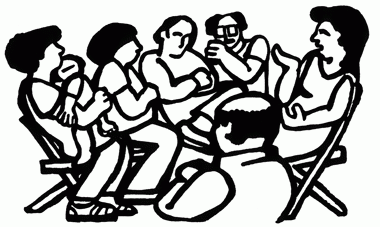Restorative Justice Conferences and Circles are highly structured processes that are based on and rooted in indigenous practices, like those of the Anishinaabek. Restorative Justice Conferences or Circles provide an opportunity for community members to come together to address harmful behavior in a process that explores harms and needs and a path toward accountability and repair. “Restorative Justice” is a philosophy of justice as well as a specific set of practices that bring together those who experienced harm with those who caused harm to “make things right.” For more on Restorative Justice see here (link tbd). Use of the words “Circle” or “Circle Process” by an OSCR facilitator may refer to a Restorative Justice Circle OR it may refer to a Facilitated Dialogue that uses a “circle process” to structure the dialogue. (For more on the latter, see Facilitated Dialogues.)
Who’s involved?
- Person(s) who caused harm—the individual(s) whose actions have harmed or affected others
- Impacted People—those who were directly harmed or affected by what happened
- Affected People—others who’ve been affected by what happened
- Supporting People—people who would like to attend the circle to support one or more participants in the circle
- Facilitators—trained OSCR professional or student staff who facilitate the process
What takes place at a Restorative Justice Conference or Circle?
Restorative Justice processes bring all participants together to meet, talk about what happened, and settle on a plan to repair the harm. Restorative Justice Circles and Conferences are some of OSCR’s most structured processes.
In a typical Restorative Justice Circles or Conference:
- The facilitator holds and sets the space by welcoming all participants.
- Each person introduces themself and their relationship to what happened.
- People who have caused harm share what happened before, during, and after the incident, and how they feel about what happened.
- Impacted and Affected Participants share what happened before, during, and after the incident, how they feel about what happened, and any questions they have.
- Supporting Participants are invited to share any thoughts or feelings about what they’ve heard.
- Facilitators ask questions to help guide the process. Facilitators are multipartial, rather than impartial or neutral. This means they are equitably partial to everyone involved in the process. Facilitators will act to ensure that all participants have the opportunity to share their thoughts, feelings, and experiences about the conflict as well as what could be done to make things better.
- Once everyone has shared their thoughts and feelings about what happened, the group will brainstorm options for repairing the harm. The group decides which options could best repair the harm and those who caused harm share what they are willing to do to repair it.
- If the group chooses to create a written agreement, the facilitators will record and compile the agreement, which is signed by all participants.
- The facilitators provide formal closure to the process.
What are the benefits of using a Restorative Justice Conference or Circle to resolve conflicts?
- Rather than focusing on what policies have been broken, restorative justice circles or conferences instead help identify who has been hurt and what must be done to repair the harm.
- In a circle or conference all participants work together to develop a resolution agreement that resolves the conflict. In order for a resolution agreement to be reached, all participants’ voices must be heard, and all participants must be in agreement about the terms of the resolution agreement.
- Restorative Justice processes help people who have caused harm restore their standing in their communities and repair any relationships that were damaged by their actions.
- Restorative Justice processes provide Impacted Participants a safe, facilitated space to tell the person who has caused them harm how their actions affected them. Impacted participants play an active part in deciding how the person who has caused harm can best repair the harm done.
- Restorative Justice processes allow Supporting Participants to describe more holistically how what occurred has affected those they are supporting.
- Restorative Conferences or Circles also allow for absent participants to contribute their voices through impact statements that may be shared in the process on their behalf in absentia.
For complaints that may also constitute violations of the Statement of Student Rights and Responsibilities, successful resolution of the matter using a Restorative Conference or Circle means that the person who was named in the complaint does not incur a disciplinary record.

